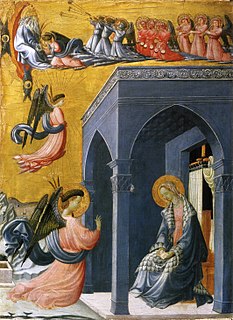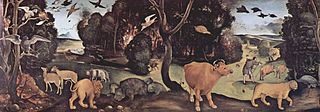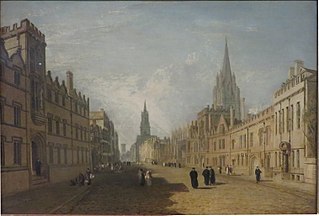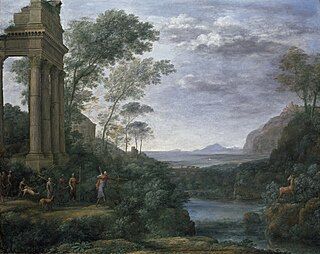 W
WAnnunciation is a gold and tempera on panel painting by Paolo Uccello executed c. 1425. It is now in the Ashmolean Museum in Oxford, England, to which it was given by William Thomas Herner Fox-Strangways in 1850.
 W
WConvent Thoughts is a painting by the Pre-Raphaelite painter Charles Allston Collins which was created between 1850 and 1851. Collins sent it to the Royal Academy of Arts in 1851 where it was exhibited.
 W
WA Converted British Family Sheltering a Christian Missionary from the Persecution of the Druids is a painting by William Holman Hunt that was exhibited at the Royal Academy in 1850 and is now in the Ashmolean Museum in Oxford. It was a companion to John Everett Millais's Christ in the House of His Parents. Both artists sought to depict similar episodes from very early Christian history, portraying families helping an injured individual. Both also stressed the primitivism of the scene.
 W
WThe Deposition is a 1619 painting by the Flemish artist Anthony van Dyck. It dates to around 1619 and reworks his 1615 version of the same subject It was presented to the Ashmolean Museum in 1869 by Charles T Maude and still resides there.
 W
WEcce Homo is a subject of a series of oil on panel paintings by Andrea Solari, dating to between 1505 and 1510. Its hands show the influence of Solari's master Leonardo da Vinci and particularly his Lady with an Ermine.
 W
WThe Forest Fire is a painting by Italian Renaissance painter Piero di Cosimo. The painting depicts a variety of frightened animals attempting to escape a forest fire. The painting has a lot of activity, at the center of which is the raging fire itself. One of the earliest landscape paintings of the Renaissance, it combines real animals as well as made up animals. It was inspired by Book 5 of Lucretius's On the Nature of Things.
 W
WHigh Street, Oxford is an oil painting by J. M. W. Turner that was exhibited in 1810.
 W
WThe Hunt in the Forest is a painting by the Italian artist Paolo Uccello, made around 1470. It is perhaps the best-known painting in the Ashmolean Museum, Oxford, England.
 W
WLandscape with Ascanius Shooting the Stag of Sylvia is a painting of 1682 in oil on canvas by Claude Lorrain, a painter from the Duchy of Lorraine who spent his career in Rome. It was painted in Rome for Prince Lorenzo Onofrio Colonna (1637–1689), Claude's most important patron in his last years, and is now in the Ashmolean Museum, Oxford. It is signed, dated with the year, and inscribed with the subject, as Claude sometimes did with his less common subjects.
 W
WPortrait of Giacomo Doria is a portrait of Giacomo Doria by Titian, painted in 1533–1535 and now in the Ashmolean Museum.
 W
WThe Return of the Dove to the Ark is a painting by Sir John Everett Millais, completed in 1851. It is in the Thomas Combe collection at the Ashmolean Museum, Oxford.
 W
WJohn Ruskin is a portrait of the leading Victorian art critic John Ruskin (1819–1900). It was painted by the Pre-Raphaelite artist John Everett Millais (1829–1896) during 1853–54. John Ruskin was an early advocate of the Pre-Raphaelite group of artists and part of their success was due to his efforts.
 W
WZhong Kui the Demon Queller with Five Bats is a popular Chinese painting featuring the Chinese mythological spirit Zhong Kui. It originates from the Ming dynasty (1368–1644). A possible painter for this artwork is Wu Wei. The painting is held in the Ashmolean Museum in England.